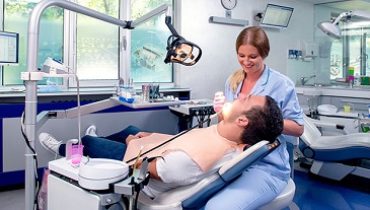
Common Issues People Have With Their Dentists
Patient Advocacy
Common issues with dentists
A dentist’s job is extremely sensitive, requiring high attention to detail. The medical profession, regardless of whatever the specialization maybe, demands commitment and honesty toward the pati canent along with fair treatment. However, there are a few black sheep in the herd that degrades the integrity of such a noble profession. Source: fingerlakesfamilydental Here are some of the most common problems you might encounter with your dentist.- Problem #1: Pain isn’t the major concern
It might sound scary and concerning, but some truly educated individuals believe that if there is no pain in the mouth, it’s all good. However, the reality is far from it. High cholesterol doesn’t hurt either, but it is a major health problem, isn’t it?
What we are telling you is that sometimes dentists fall in this category as well. They sometimes carry out inefficient diagnosis practices that lead to patients get a false perception of their oral health. Therefore, it is important and crucial that only the experienced and well-acknowledged dentists are to be preferred. Even if it costs a few more bucks, it is not worth more than your health.
- Problem #2: Not enough visits
Another major issue is that the dentist often advises their patients to visit them twice a year. This is not the most efficient of the statements, especially coming from a medical professional. Twice a year is only applicable when you have healthy oral conditions. Most people don’t. It is the responsibility of a dentist to provide complete and specific guidance to the patient’s health condition.
- Problem #3: You didn’t brush your whole mouth
You must have heard this several times, brush your teeth twice a day, or maybe thrice a day. But, have you ever been told how to brush your teeth?
This is one of the most common issues found among dental patients. According to them, most people have perfect teeth from the front but have terrible oral conditions on the back. None of the dentists have ever told them about how they should be brushing their teeth. Evidently, patients only brush what others can see.
- Problem #4: Too expensive
For every individual without health insurance, avoids visiting a dentist. One of the major reasons why patients decide against dental insurance is because even with a dental insurance plan, there is not enough coverage.
The majority of the dental plans only cover up to around $1,500/year. This will not be enough to cover your kid’s braces payment, which will cost you approximately $6,000.
Cost is one of the primary reasons why patients refrain from visiting a dentist. This not only puts patients usually put their dental health in jeopardy but also deteriorates the overall health as well.
The annual inflation rate has also put an additional burden on the dental patients where they have to spend at least a fortune to get oral surgery or tooth extraction. According to the Labor Statistics Bureau, between 2008-12, prices of nursing home care, hospital services, and daycare services all have been raised high due to the yearly inflation rate.
A normal dentist’s average income is around $200,000. It the dentists have done some kind of specialization, then the average salary would be about $300,000. But this is still not the bigger concern.
The major concern is that some private dentists are charging significantly higher than what the industry standard cost is. This creates a disparity and a lack of trust among the patients. It can lead to people avoiding dental visits more and prefer to fall into healthcare problems, especially related to oral health even more.
- Problem #5: Not spending enough time
A major problem that is common in all the issues that have been mentioned above is the lack of commitment of a dentist towards the patient. An average individual must spend at least 10 minutes on flossing and brushing every day. However, not many dentists have provided this instruction, which leads to patients spending 2-3 minutes at max
